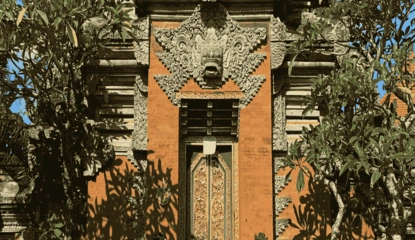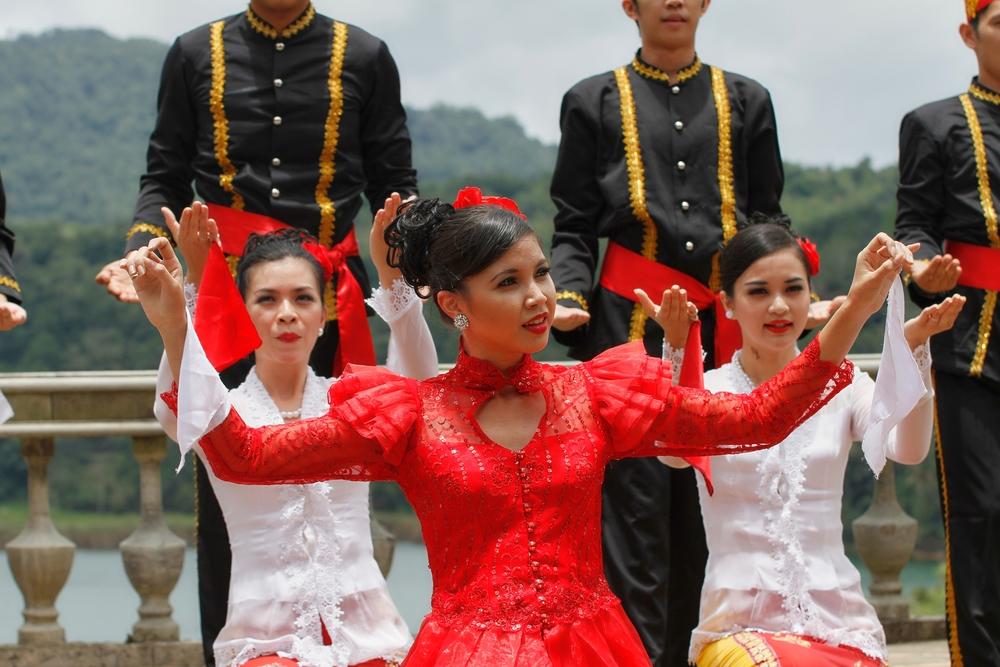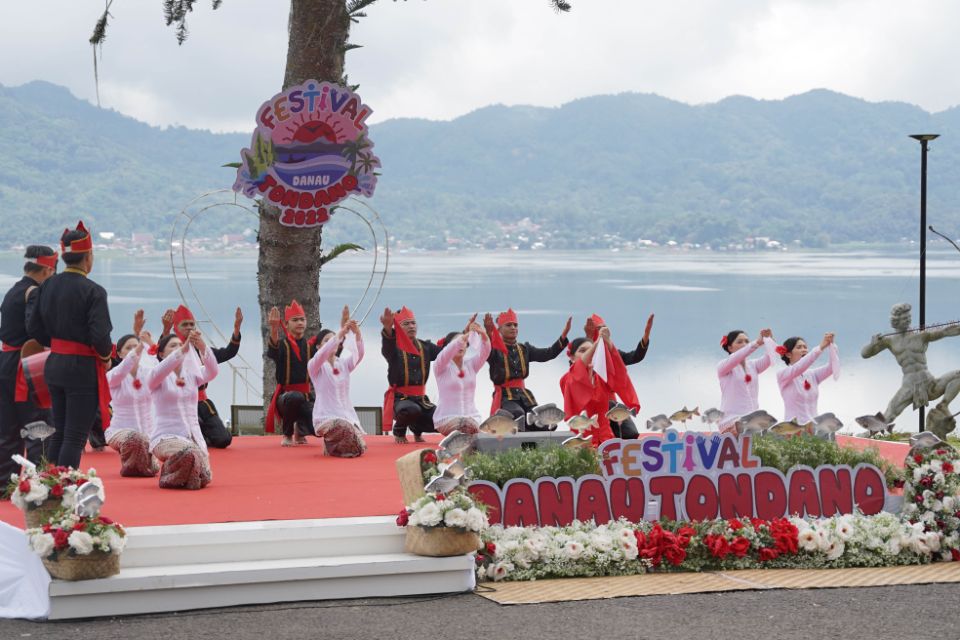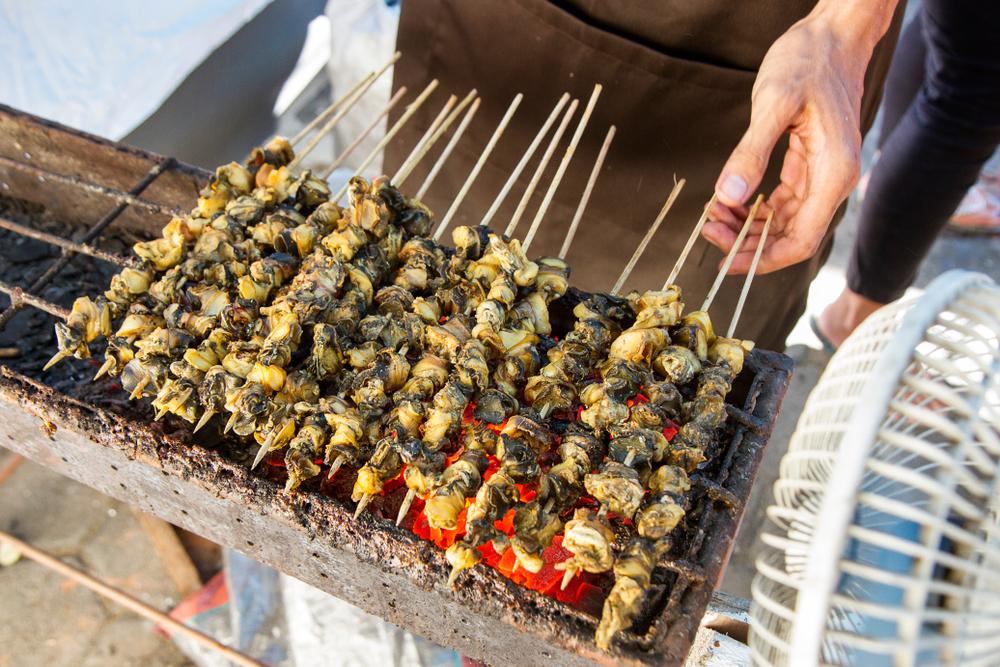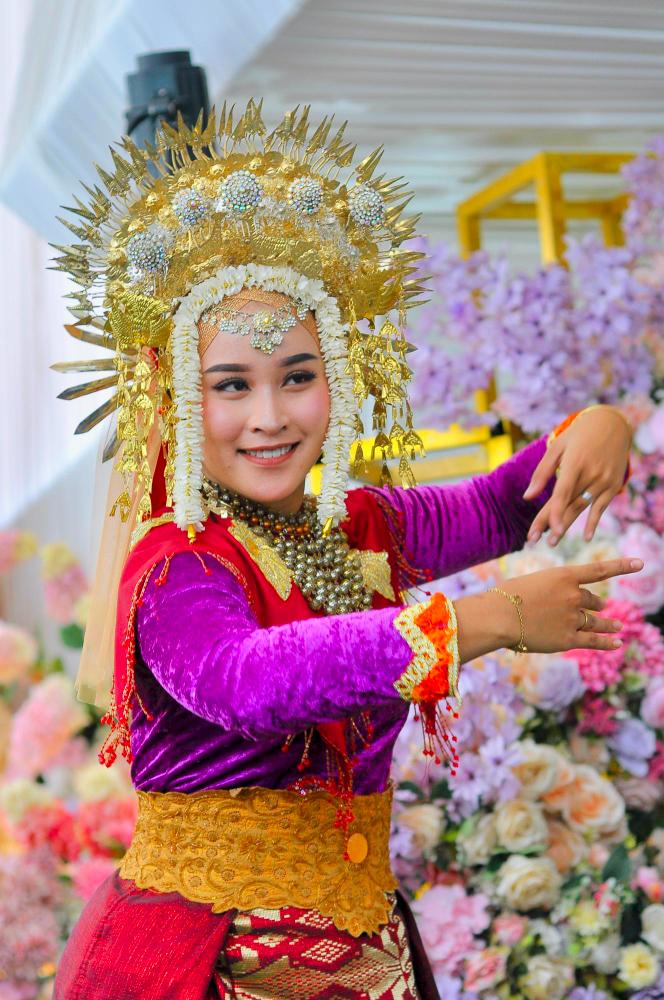Tari Maengket is one of the traditional dances originating from North Sulawesi, specifically from the Minahasa region. This dance is known as a representation of togetherness, the spirit of mutual cooperation, and the dynamics of daily life activities within the community. Tari Maengket is often performed during traditional ceremonies, weddings, and various cultural events as an expression of gratitude and joy.
Distinctive Features
Tari Maengket features dynamic, energetic, and spirited movements. The movements reflect the daily activities of the community as they work and socialize. The choreography focuses on group movements that combine hand, leg, and body motions in unison, emphasizing teamwork and the spirit of togetherness. Though the dance movements are simple, they carry deep meaning, making them easy to learn and engaging to perform at various events.
Costumes
- Traditional attire typical of North Sulawesi with bright colors and regional motifs.
- Traditional accessories including bracelets, necklaces, and headbands that are distinctive and traditional.
- The costumes are simple yet retain strong aesthetic and symbolic cultural values.
Musical Accompaniment
Tari Maengket is accompanied by traditional music played using instruments such as kolintang (a type of xylophone), drums, and gongs. This music features dynamic and energetic tones that follow the active movements of the dance, motivating dancers to express every movement to its fullest.
Philosophical Meaning
- Togetherness and unity: teaching the importance of community solidarity.
- Spirit of mutual cooperation: symbolizing the willingness to help and work together in various communal activities.
- Gratitude for life: representing expressions of thankfulness for the blessings of everyday life.
The Role of Maengket Dance in the Lives of the North Sulawesi Society
1. Strengthens social bonds among community members by encouraging interaction through dance.
2. Serves as a means of conveying cultural messages and ancestral values to younger generations.
3. Used in traditional ceremonies and weddings as symbols of happiness and gratitude.
4. Promotes a sense of solidarity and cooperation among members during traditional events.
5. Acts as a form of entertainment and motivation during cultural festivities and celebrations.
The Uniqueness of Tari Maengket
One of the most attractive aspects of Tari Maengket is its flexibility, as it can be adapted to suit various events and activities. The cheerful, spirited movements and the dancers' unity reflect the inclusive and welcoming culture of North Sulawesi’s people. Tari Maengket represents a timeless spirit of togetherness and is more than just a performance; it is a symbol of culture that carries profound meaning and emotional connection among the people of North Sulawesi.





